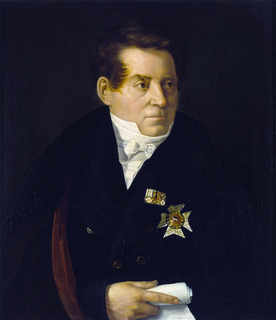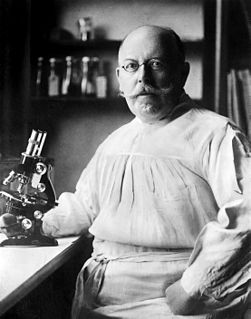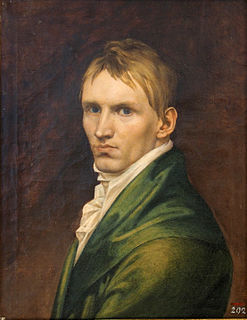
Friedrich Wilhelm Engelhard (19 Sept 1813 - 22 January 1902) was a German sculptor and painter.

Friedrich Wilhelm Engelhard (19 Sept 1813 - 22 January 1902) was a German sculptor and painter.
He was born in Grünhagen (near Bienenbüttel, Prussia). He studied at Hanover, at Copenhagen with Thorwaldsen and at Munich with Schwanthaler.
He executed many groups, single figures and genre pieces. His chief work was a frieze on the Edda. This was executed in 1857 in the Marienburg Palace at the request of George V, King of Hanover. It is a colossal work dealing with the main features of the saga and rich in grand sculptural effects.
Among Engelhard's other creations are “Love on a Swan,” “Dancing Springtime,” “Slinger with Dog,” “Bacchus Conquering a Panther,” “Cupid and Psyche,” “A Child Fishing,” “A Child Threading a Needle,” statue of St. Michael, portrait medallion of Bismarck (for the monument of Canossa, near Harzberg), “Christ Blessing Little Children,” and legendary characters of Germany: Odin, Thor, and the Valkyries.
This article includes a list of references, related reading or external links, but its sources remain unclear because it lacks inline citations .(July 2014) |

Hamelin is a town on the river Weser in Lower Saxony, Germany. It is the capital of the district of Hamelin-Pyrmont and has a population of roughly 57,000. Hamelin is best known for the tale of the Pied Piper of Hamelin.

August WilhelmSchlegel, usually cited as August Schlegel, was a German poet, translator and critic, and with his brother Friedrich Schlegel the leading influence within Jena Romanticism. His translations of Shakespeare turned the English dramatist's works into German classics. Schlegel was also the professor of Sanskrit in Continental Europe and produced a translation of the Bhagavad Gita.

Karl Wilhelm FriedrichSchlegel was a German poet, literary critic, philosopher, philologist, and Indologist. With his older brother, August Wilhelm Schlegel, he was one of the main figures of Jena Romanticism.

Eduard Friedrich Mörike was a German Lutheran pastor who was also a Romantic poet and writer of novellas and novels. Many of his poems were set to music and became established folk songs, while others were used by composers Hugo Wolf and Ignaz Lachner in their symphonic works.

Ernest Augustus was the reigning Duke of Brunswick from 2 November 1913 to 8 November 1918. He was a grandson of George V of Hanover, whom the Prussians had deposed from the Hanoverian throne in 1866, and Christian IX of Denmark.

Christian Daniel Rauch was a German sculptor. He founded the Berlin school of sculpture, and was the foremost German sculptor of the 19th century.

Friedrich Wilhelm, Duke of Schleswig-Holstein-Sonderburg-Glücksburg inherited the title of Duke of Schleswig-Holstein-Sonderburg-Beck as Frederick William IV in 1816. He subsequently changed his title to Duke of Schleswig-Holstein-Sonderburg-Glücksburg in 1825 and founded a line that includes the Royal Houses of Denmark, Greece, Norway, and the Commonwealth realms.

Friedrich August Johannes Loeffler was a German bacteriologist at the University of Greifswald.
Friedrich Conrad Dietrich Wyneken was a missionary pastor in the United States. He also served for fourteen years as the second president of the Lutheran Church–Missouri Synod, and helped found Concordia Theological Seminary.
Heinrich August Wilhelm Meyer was a German Protestant divine. He wrote commentaries on the New Testament and published an edition of that book.

Friedrich Drake was a German sculptor, best known for his huge memorial statues.
Prince George William of Hanover was the second-eldest son of Ernest Augustus, Duke of Brunswick, and his wife Princess Victoria Louise of Prussia, the only daughter of Wilhelm II, German Emperor, and Augusta Victoria of Schleswig-Holstein.

Christian Friedrich Tieck, often known only as Friedrich Tieck, was a German sculptor and a occasional artist in oils. His work was primarily figurative and includes both public statuary and private commissions for portrait busts.

Theodor Friedrich Wilhelm Christian Kaulbach was a German painter from Bad Arolsen, Principality of Waldeck and Pyrmont. His father was Christian Kaulbach (1777–1847), a cabinet maker in Arolsen. He was also the cousin and at one time the student of the painter Wilhelm von Kaulbach, son of Philipp Karl Friedrich v. Kaulbach (1775–1846), goldsmith and amateur painter.

Georg Otto August Wissowa was a German classical philologist born in Neudorf, near Breslau.

Carl Wilhelm Friedrich Oesterley was a German painter and art historian. He is remembered largely for creating oil paintings with Biblical themes.

Wolf Wilhelm Friedrich Graf von Baudissin was a German Protestant theologian who was a native of Sophienhof, near Kiel.

Johann Gotthard von Müller was a German line engraver.

Karl Johann Philipp Spitta was a German Protestant religious poet.
Events from the year 1831 in Germany
| Wikimedia Commons has media related to Friedrich Wilhelm Engelhard . |